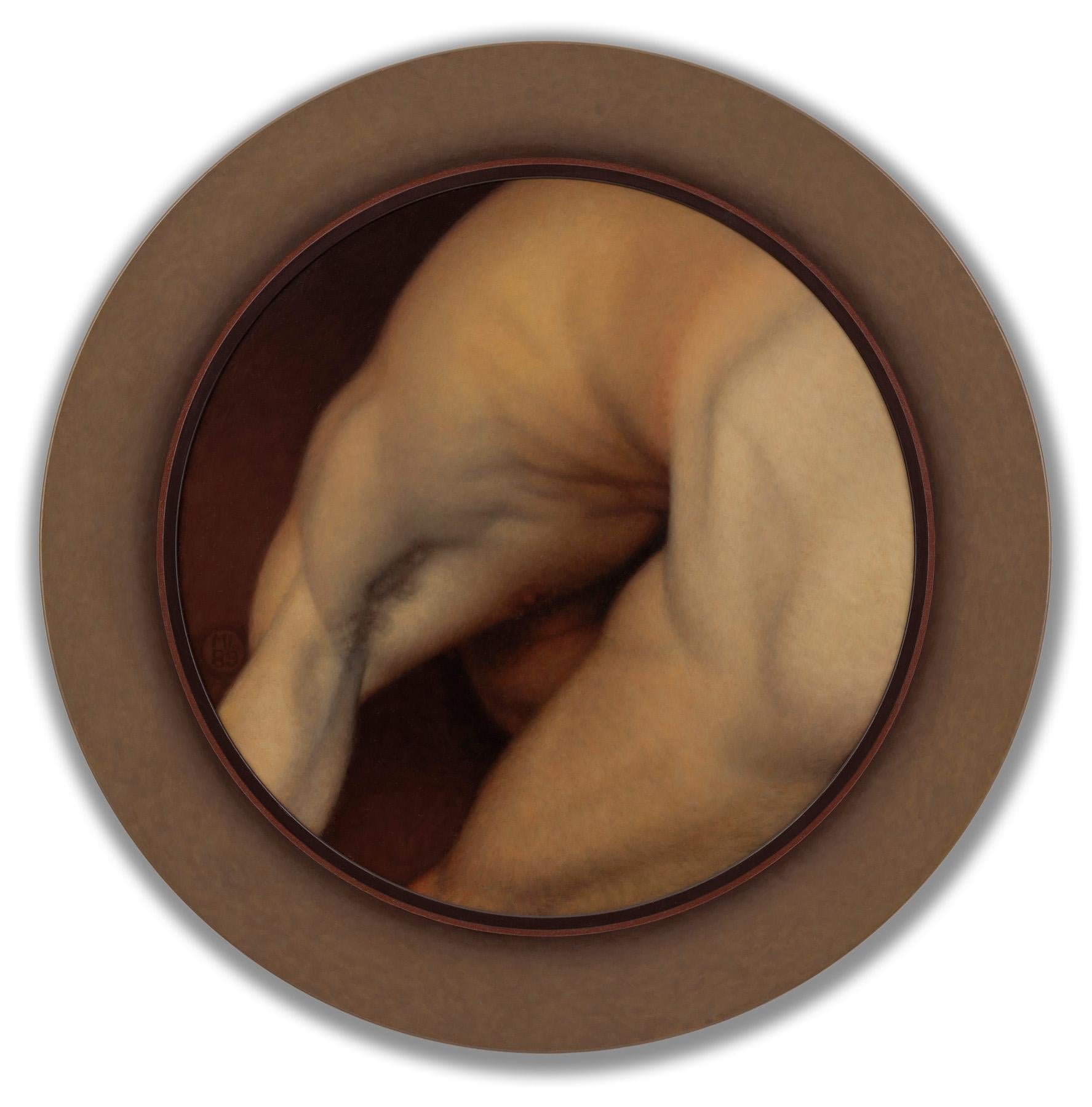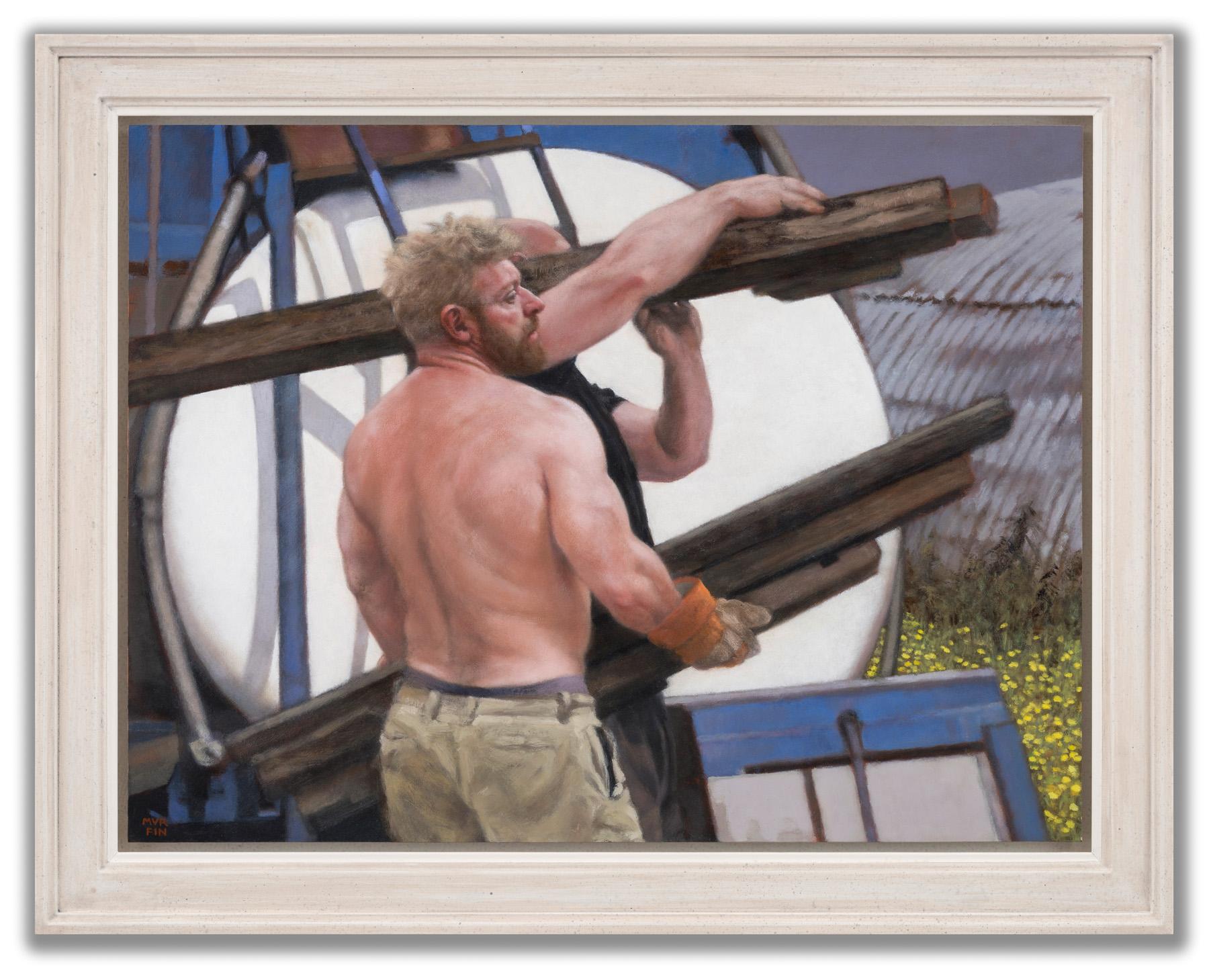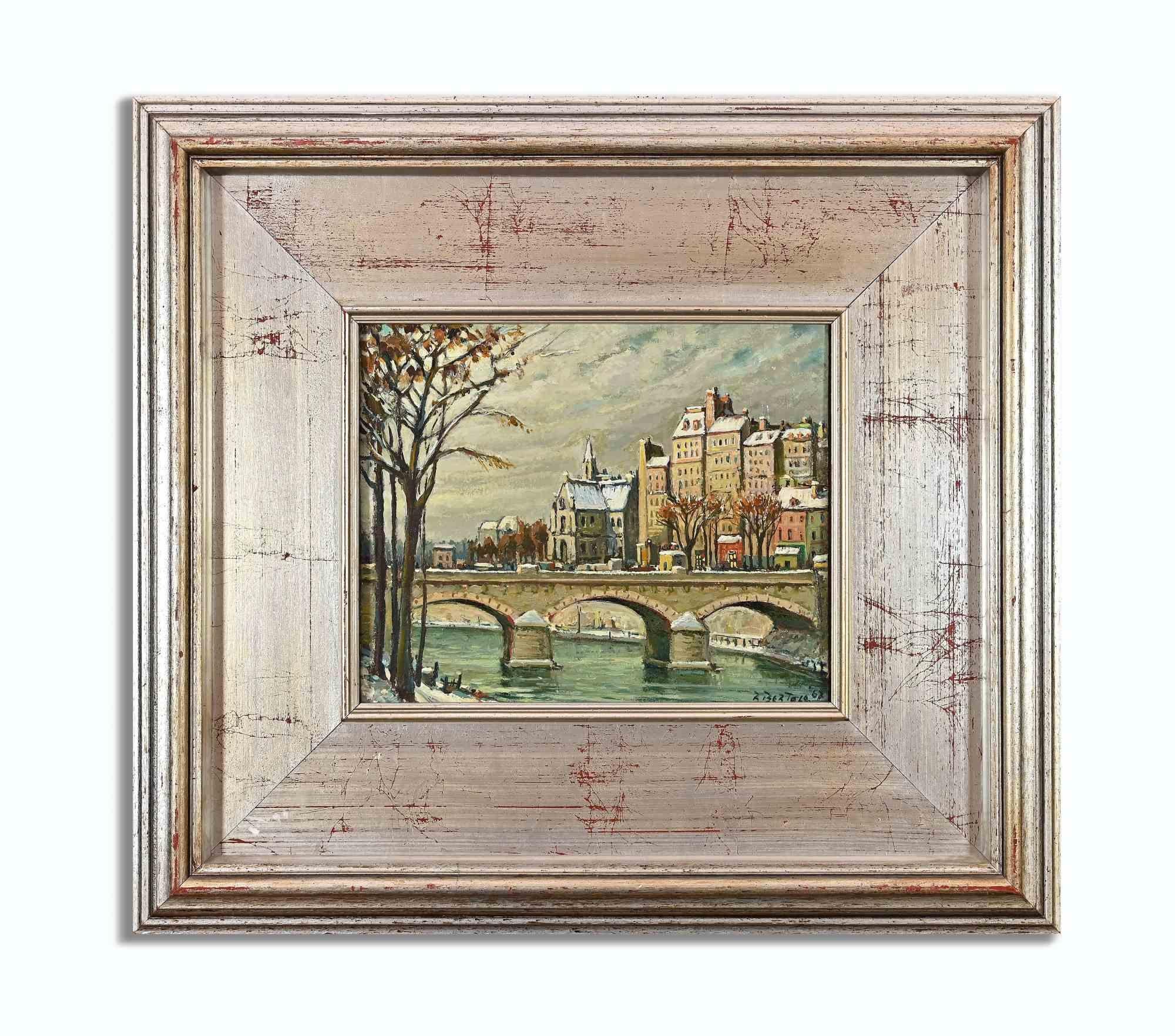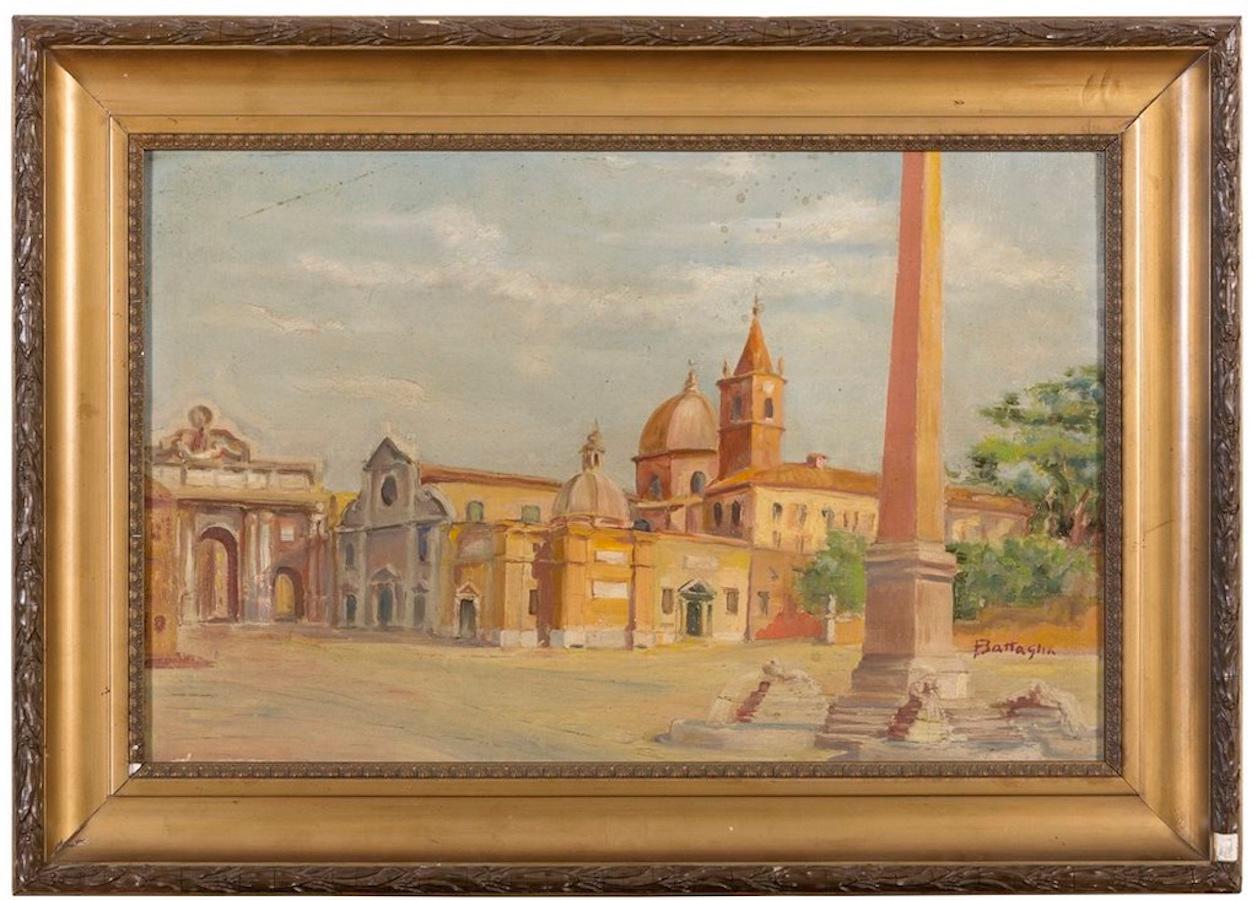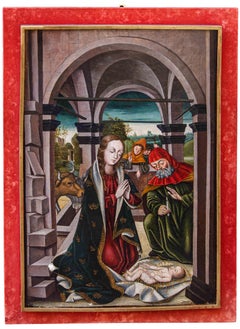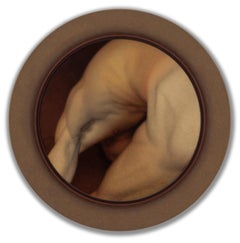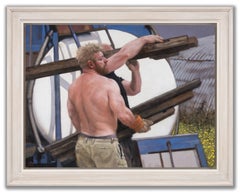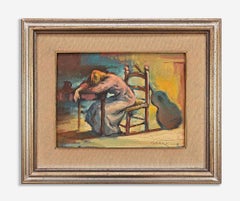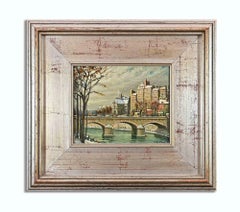Items Similar to Scope of Abraham Janssens (Antwerp, 1573- Amsterdam, 1632), Magdalene
Want more images or videos?
Request additional images or videos from the seller
1 of 13
Scope of Abraham Janssens (Antwerp, 1573- Amsterdam, 1632), MagdaleneXVII Century
XVII Century
$4,157.93
£3,090.94
€3,500
CA$5,719.44
A$6,371.33
CHF 3,360.78
MX$77,254.37
NOK 42,753.93
SEK 39,827.99
DKK 26,658.58
About the Item
Scope of Abraham Janssens (Antwerp, c. 1573/1574 - Amsterdam, 1632)
Magdalene in prayer
Oil on copper, 35 x 27 cm
Framed, 50 x 44 cm
Abraham Janssens, who was born in Antwerp around 1573-1574 and died in Amsterdam in 1632, is a fascinating and, in some ways, unjustly neglected figure in the panorama of Flemish Baroque art. Although his name is often overshadowed by the greatness of Peter Paul Rubens, Janssens was a significant innovator, a remarkably talented painter who played a crucial role in the transition from Mannerism to Baroque, especially in history painting in Flanders. His artistic training took place in Antwerp, where he was a pupil of Jan Snellinck the Elder. This apprenticeship laid the foundation for a career that would see him emerge as one of the leading painters of his generation. A trip to Italy, probably between 1597 and 1602, was a key formative moment. In Rome, Janssens had the opportunity to engage with the works of the Renaissance masters and, crucial to his development, with the emerging Caravaggism. The influence of artists such as Caravaggio and Annibale Carracci is evident in his later production, particularly in his predilection for sculptural modeling and dramatic use of light. Upon his return to Antwerp, Janssens quickly established himself as master of the Guild of St. Luke in 1602-1603. It was a time of great artistic ferment in the city, and Janssens found himself competing and collaborating in a dynamic environment. His early works, such as the "Stairway of Virtue" (ca. 1605) or "Diana and Callisto" (ca. 1601), still show Mannerist reminiscences, but already reveal an attention to the monumentality of figures and a compositional clarity that prefigure the Baroque. His style matured rapidly, and between 1606 and 1612, Janssens produced some of his most significant works, characterized by a sculptural robustness of the figures, strong, directional lighting, and an ability to express dramatic pathos. Excellent examples from this period include "Skeleton with Sickle, the Three Fates and a Young Girl" (1608), an allegory of the transience of life, and especially "Climb to Calvary" (1609-1610), a work of great emotional and compositional impact. A distinctive aspect of Janssens' art is his emphasis on physicality and anatomical rendering, often with a tendency toward heroism in the figures. This distinguishes him to some extent from Rubens, whose style was more oriented toward fluidity of movement and chromatic brilliance. Janssens, on the other hand, favored a more restrained and earthy palette, and his compositions, while dynamic, retained a certain monumental, almost sculptural stillness. The rivalry, or at least the comparison, with Rubens is an inescapable element in Janssens' biography. Both were leading artists in Antwerp, and although Rubens eventually prevailed in terms of fame and large-scale commissions, Janssens retained a significant role, especially for works on religious and mythological subjects intended for an educated clientele. Interestingly, both artists helped define the Flemish Baroque language, but with distinct stylistic approaches. In the later years of his career, Janssens' style became less rigorous and more influenced by the trends of the time, in part because of the rise of Rubens. However, his importance as a pioneer cannot be underestimated. He was one of the first to bring the vigor of Italian naturalism to Flanders, paving the way for future generations of painters. Abraham Janssens was an artist of depth and complexity whose work deserves reconsideration. His ability to blend the monumentality of the Roman Renaissance with the dramatic intensity of Caravaggism makes him a key figure in understanding the development of the Flemish Baroque. Although he did not achieve the universal fame of Rubens, his output is a testament to his mastery and fundamental contribution to art history.
Our painting takes up one of the most successful models of Abraham Janssens' painting; that of the Magdalene at prayer in fact turns out to be one of the iconographic modules most taken up by his pupils and followers. The painting shows a female figure, identifiable as Mary Magdalene, sitting in a pensive and devout pose. His gaze is upward, with an expression of deep contemplation or prayer, and his eyes seem slightly reddened, suggesting tears or intense fervor. The woman is richly dressed in clothes that, while denoting a certain luxury, are presented in a way that recalls her past worldly life before her conversion. She wears a white or cream robe under a dark bodice, and a wide golden yellow drape wraps around her shoulders and arms, creating voluminous and luminous folds. On his arms he wears gold bracelets, and around his neck several necklaces, one of which is adorned with red and gold beads and pendants. Her long dark hair falls loosely over her shoulders. On the head, a small red floral decoration completes the hairstyle. The scene is set in a dark, almost bare interior that emphasizes the central figure. On the right side of the painting, at the bottom, some attributes typical of depictions of Mary Magdalene and vanitas are visible: a human skull, a symbol of mortality, and several precious objects such as jewelry and perhaps a crown or tiara, representing earthly possessions abandoned in favor of spirituality. An urn or jar of ointments, another iconographic attribute of Magdalene, may be just visible in the background on the right. The dramatic lighting is clearly Caravaggio-derived, with light seemingly coming from the upper left, illuminating the face, chest, and yellow drape, creating strong contrasts between the lit and shaded areas. This chiaroscuro accentuates the emotional depth and spirituality of the scene, typical of Baroque art in Italy as well as north of the Alps. The brushwork appears rich and textural, especially in the rendering of textiles and jewelry.
- Creation Year:XVII Century
- Dimensions:Height: 13.78 in (35 cm)Width: 10.63 in (27 cm)
- More Editions & Sizes:cm 35 x 27Price: $4,158
- Medium:
- Circle Of:Abraham Janssens (1575 - 1632, Flemish)
- Period:
- Condition:
- Gallery Location:Milan, IT
- Reference Number:1stDibs: LU2639216764012
About the Seller
No Reviews Yet
Vetted Professional Seller
Every seller passes strict standards for authenticity and reliability
1stDibs seller since 2023
Typical response time: <1 hour
- ShippingRetrieving quote...Shipping from: Milan, Italy
- Return Policy
Authenticity Guarantee
In the unlikely event there’s an issue with an item’s authenticity, contact us within 1 year for a full refund. DetailsMoney-Back Guarantee
If your item is not as described, is damaged in transit, or does not arrive, contact us within 7 days for a full refund. Details24-Hour Cancellation
You have a 24-hour grace period in which to reconsider your purchase, with no questions asked.Vetted Professional Sellers
Our world-class sellers must adhere to strict standards for service and quality, maintaining the integrity of our listings.Price-Match Guarantee
If you find that a seller listed the same item for a lower price elsewhere, we’ll match it.Trusted Global Delivery
Our best-in-class carrier network provides specialized shipping options worldwide, including custom delivery.More From This Seller
View AllBy Francesco del Brina, Nativity
Located in Milan, IT
Francesco Del Brina (Florence, 1529 - 1586)
Nativity
Oil on panel, 70 x 47.5 cm
Framed, 80 x 58 cm
Critical Record Prof. Alessandro Delpriori
The work is not signed
Born into a ...
Category
16th Century Other Art Style Figurative Paintings
Materials
Oil, Board
By Giovanni Battista del Verrocchio, Madonna and Child with St. John the Baptist
Located in Milan, IT
Giovanni Battista del Verrocchio, known as The Master of Volterra (Florence 1494 - 1569)
Madonna with Child and San Giovannino
Oil on panel, 63 x 50 cm
Frame: 92 x 80 cm
The styl...
Category
16th Century Other Art Style Figurative Paintings
Materials
Oil, Board
Panel depicting pastoral scene attributed to Gerolamo da Ponte ( Bassano)
Located in Milan, IT
Gerolamo da Ponte (attr.) (Bassano 1566 - Venice 1621)
Pastoral Scene
Oil on panel, 44.5 x 36 cm
The Da Ponte family are concordantly known as Bassano, after the name of their cit...
Category
17th Century Figurative Paintings
Materials
Oil, Board
Circle of Rodrigo de Osona the Elder (Valencia, 1440 - 1518), Nativity
Located in Milan, IT
Circle of Rodrigo de Osona the Elder (Valencia, 1440 - 1518)
Nativity
Oil on panel, 89 x 59 cm
Framed, 99 x 69 cm
In a picturesque setting, protected by an imposing Renaissance l...
Category
16th Century Other Art Style Figurative Paintings
Materials
Oil, Board
Follower of Andrea del Sarto, Madonna and Child
By Andrea Del Sarto
Located in Milan, IT
Follower of Andrea del Sarto (Florence, July 16, 1486 - Florence, September 29, 1530)
Madonna and Child, St. John and two Angels
Oil on panel, 73 x 61.5 cm
With frame 100 x 90 cm...
Category
16th Century Other Art Style Figurative Paintings
Materials
Oil, Board
Paolo Monaldi (Rome, 1710 - after 1779), attr. , Genre scene
Located in Milan, IT
Paolo Monaldi (Rome, 1710 - after 1779), attr.
Genre scene
Oil on canvas, 28 x 38 cm
Framed, 36.5 x 46 cm
The canvas depicts a moment of repose drawn from the rural world: the...
Category
18th Century and Earlier Other Art Style Figurative Paintings
Materials
Canvas, Oil
You May Also Like
Man Reaching Down: Tondo
By Michael Leonard
Located in London, GB
Alkyd-oil on Masonite, signed and dated (middle left), 61cm (diam.), (83cm diam. framed). (This work was kept by the artist for his personal collection. It remained in his collection...
Category
1980s Post-War Figurative Paintings
Materials
Oil, Board
Housekeeping
Located in London, GB
Oil on board, signed (lower left), 44cm x 59cm, (70cm x 56cm framed). The picture is good condition and the work comes directly from the artist.
Painter, draughtsman and teacher, b...
Category
21st Century and Contemporary Contemporary Figurative Paintings
Materials
Oil, Board
Loneliness - Oil on Board by Sergio Capitani - 1977
Located in Roma, IT
Loneliness is an original modern artwork realized by the artist Sergio Capitani in 1977
Mixed colored oil on board.
Hand signed on the lower left margin.
Authenticity label on th...
Category
1970s Contemporary Figurative Paintings
Materials
Oil, Board
Paris Under the Snow - Oil Paint by Roberto Bertola - 1967
Located in Roma, IT
Paris under the snow is an original modern artwork realized by Roberto Bertola.
Oil on Board.
Signed and dated lower right and on the back.
Includes frame: 53.5 x 59 cm
Category
1960s Contemporary Landscape Paintings
Materials
Oil, Board
Piazza del Popolo, Rome - Oil on Canvased Cardboard - Early 20th Century
By Alessandro Battaglia
Located in Roma, IT
Piazza del Popolo is an original modern artwork realized by the Italian artist Alessandro Battaglia (1870-1940) in the first years of the XX century.
Original oil on canvased cardbo...
Category
Early 20th Century Figurative Paintings
Materials
Canvas, Oil, Cardboard
Landscape with Trees - Oil on Cardboard by Alberto Zardo
By Alberto Zardo
Located in Roma, IT
Landscape with Trees is an original modern artwork realized by the Italian painter Alberto Zardo in the first decades of the XX Century.
Original oil on cardboard.
Hand-signed by ...
Category
Early 20th Century Modern Figurative Paintings
Materials
Oil, Cardboard
